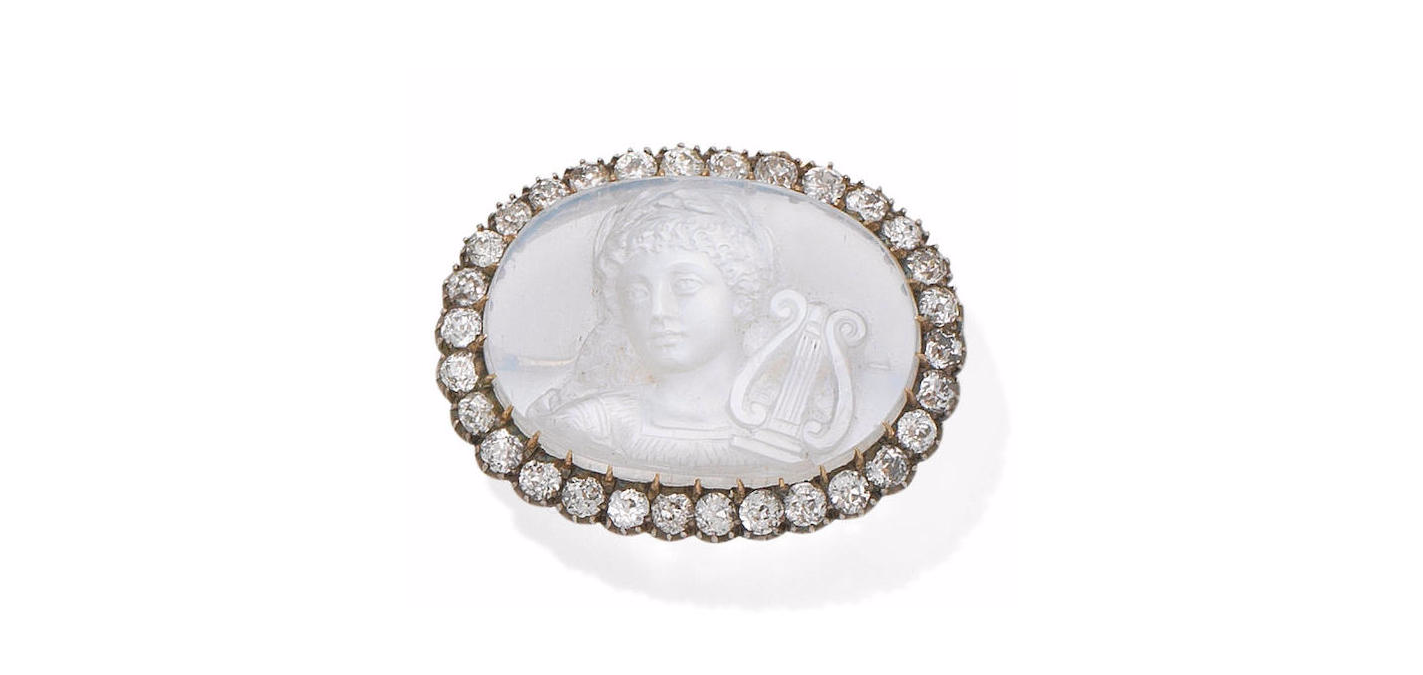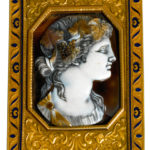Apollo is one of the most important and complex of the Olympian deities in classical Greek and Roman religion and Greek and Roman mythology. The ideal of the kouros (a beardless, athletic youth), Apollo has been variously recognized as a god of music, truth and prophecy, healing, the sun and light, plague, poetry, and more. Apollo is the son of Zeus and Leto, and has a twin sister, the chaste huntress Artemis. Apollo is known in Greek-influenced Etruscan mythology as Apulu.

Apollo was worshipped throughout the Roman Empire. In the traditionally Celtic lands he was most often seen as a healing and sun god. He was often equated with Celtic gods of similar character.
Moonstone has been used in jewelry for millenia, including ancient civilizations. The Romans admired moonstone, as they believed it was born from solidified rays of the moon. Both the Romans and Greeks associated Moonstone with their lunar deities. In more recent history, the moonstone became popular during the Art Nouveau period; French goldsmith René Lalique and many others created a large quantity of jewelry using this stone.
The moonstone derives it’s name from a visual effect, or sheen, caused by light diffraction within a micro-structure consisting of a regular succession of feldspar layers. The most common moonstone is of the mineral adularia, named for an early mining site near Mt. Adular in Switzerland, now the town of St. Gotthard. The plagioclase feldspar oligoclase also produces moonstone specimens. Moonstone is feldspar with a pearly and opalescent schiller. An alternative name is hecatolite. Reference Wikipedia


